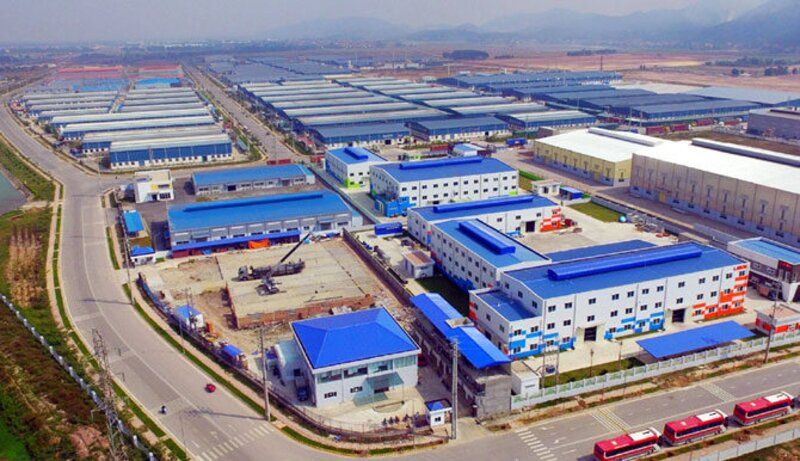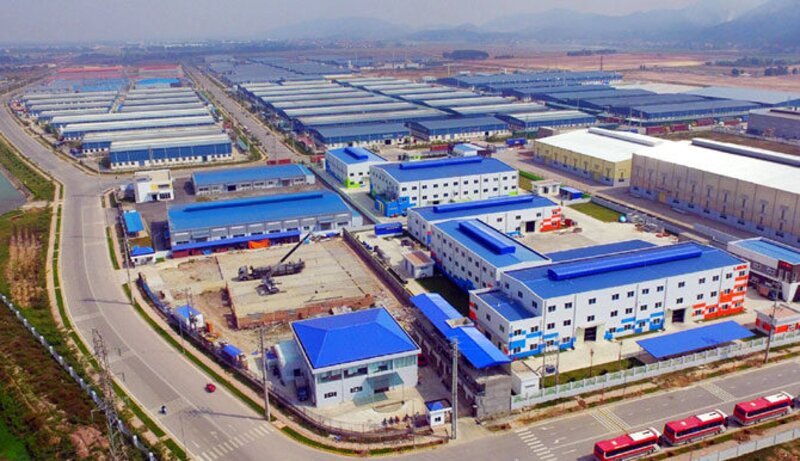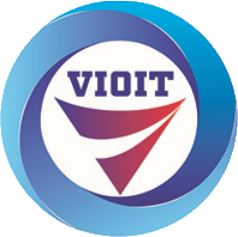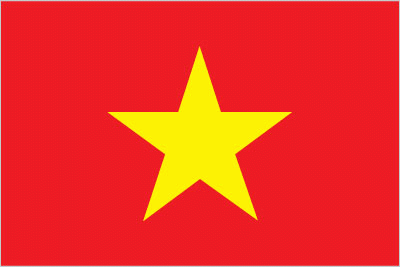
Some tasks and solutions for attracting investment and developing industry in industrial zones of Bac Giang province in the coming period
14:15 - 03/10/2024
Tran Van Thong
Bac Giang Provincial Industrial Zones Management Board
In line with the Party and State’s policies and objectives, to transform Vietnam into an industrialized nation oriented toward modernization, the government, departments, agencies, and business community of Bac Giang Province are making efforts to fully leverage all potentials, advantages and resources to achieve rapid, comprehensive, and sustainable development for the province. The development of the industrial sector is seen as a primary driving force for growth, linked to expanding new spaces, positioning the province as one of the industrial development hubs of the region. The service sector is diversifying, with breakthroughs in safety, quality, and efficiency. Infrastructure, including both technical and social aspects, as well as urban development, is being invested in a synchronized and modern manner. Science, technology, and the knowledge-based economy are being promoted as key factors contributing to improved growth quality. The province is also focused on developing a high-quality workforce. The goal is for Bac Giang to become an industrialized province by 2030, with its GRDP (Gross Regional Domestic Product) ranking among the top 15 provinces and cities nationwide and leading the Northern Midland and Mountainous Region. This process presents numerous challenges and issues that need to be addressed, particularly the need for rapid and sustainable industrial development, the development of high-tech industries, and supporting industries in key economic areas and localities with competitive advantages.
Based on this context, the article evaluates several achievements as well as the difficulties and obstacles in attracting investment and industrial development in the industrial zones of Bac Giang Province over the past period. It also provides several orientations and coordinated solutions for the coming time.
Keywords: Bac Giang; industrial Zones; Industrial Development; Investment Attraction.
1. Some advantages and results in attracting investment and industrial development in Industrial Zones in Bac Giang province in recent times.
1.1 Advantages
Bac Giang is situated in the Northeast region of Vietnam, located along the Lang Son - Hanoi - Ho Chi Minh City – Moc Bai Economic Corridor, which is part of the Nanning - Singapore Trans-Asian Corridor. The province borders the capital city of Hanoi and the provinces of Bac Ninh, Hai Duong, Lang Son, Quang Ninh, and Thai Nguyen. It is also adjacent to the “Hanoi - Hai Phong - Quang Ninh economic development triangle.” With a total land area of 389,589 hectares and 10 administrative units (comprising Bac Giang City, Viet Yen Town, and eight districts), Bac Giang is located 50 kilometers from Hanoi, 110 kilometers from the Huu Nghi border gate in Lang Son, 50 kilometers from Noi Bai International Airport, and 130 kilometers from Hai Phong Port and the Cai Lan Deepwater Port in Quang Ninh. Due to its favorable geographical location along the Nanning (China) - Lang Son - Hanoi - Hai Phong economic corridor, adjacent to the northern key economic region, combined with a newly upgraded transportation system and a skilled workforce, Bac Giang holds significant advantages for the planning of industrial zones. These zones are particularly conducive to attracting investment and fostering the development of high-tech and supporting industries. Notably, the province has excelled in various sectors, such as construction materials, automation applications, electrical and electronic manufacturing, chemicals, electronic components, mechanical engineering, textiles and garments, footwear and supporting industries for high-tech production.
To keep pace with the overall national development, in recent years, the Provincial Party Committee, People's Council, and People's Committee of Bac Giang Province has focused on developing plans and implementing numerous major key tasks to achieve this goal. Initially, they have formulated policies and outlined a roadmap for industrial development, high-tech industries, and supporting industries for the 2020-2030 period, with a vision extending to 2050. In particular, the planning and development of concentrated industrial zones have been prioritized as the leading strategic focus. According to the Bac Giang Provincial Plan for the 2021-2030 period, with a vision to 2050, approved by the Prime Minister under Decision No. 219/QD-TTg dated February 17, 2022, the province has planned to develop 29 industrial zones, covering a total area of approximately 7,000 hectares during the 2021-2030 period. The Management Board of Industrial Zones in Bac Giang Province has advised the Chairman of the Provincial People's Committee to issue Implementation Plan No. 3393/KH-UBND on July 15, 2022, to prioritize the establishment of 15 industrial zones during the 2022-2025 period.
1.2 Key Achievements
- Regarding the Planning and Development of Concentrated Industrial Zones: According to Decision No.219/QD-TTG dated February 17,2022, issued by the Prime Minister, which approved the provincial plan for Bac Giang for the 2021-2030 period with vision to 2050, by 2030, the province will have 29 concentrated industrial zones (IZs) with a total area of approximately 7,000 hectares and 38 industrial clusters with a total area of over 1,208 hectares. Hence, Bac Giang has been granted investment approval by the Prime Minister for nine industrial zones with a total area of approximately 2,238 hectares, including Dinh Tram, Quang Chau, Song Khe – Noi Hoang, Van Trung, Hoa Phu, Viet Han, Tan Hung, Yen Lu, and Phuc Son. Currently, eight of these IZs are operational, namely: Dinh Tram, Quang Chau, Song Khe – Noi Hoang, Van Trung, Hoa Phu, Viet Han, Tan Hung and Yen Lu. Several IZs, sunch as Dinh Tram, Song Khe – Noi Hoang, Quang Chau, Hoa Phu (Phase 1), have already achieved 100% occupancy. Newly approved industrial zones, such as Yen Lu (377 hectares), Hoa Phu (Phase 1 expansion, 85 hectares), Phuc Son (123 hectares), Viet Han (147.31 hectares expansion), and the Yen Lu expansion, are in the process of land clearance and compensation. The total leased industrial land area is approximately 1,250 hectares, with an average occupancy rate of around 77% across the industrial zones.
- Investment Attraction in Industrial Zones: As of now, the 8 industrial zones in Bac Giang have attracted 511 active investment projects, including 396 foreign direct investment (FDI) projects and 115 domestic investment projects. The total registered capital amounts to USD 11.055 billion and VND 23,763 billion. The total implemented capital is approximately VND 12,500 billion and USD 7.95 billion.
- Production and Business Activities of Industrial Zone Enterprises: According to reports from the Management Board of Industrial Zones in Bac Giang, there are currently 501 established enterprises across 9 industrial zones, with 441 of them operational. Based on consolidated data, the total revenue of these enterprises in 2023 surpassed VND 516,000 billion, of which the industrial production value reached over VND 453,000 billion. The estimated export turnover amounted to USD 22.05 billion. The total tax contributions of industrial zone enterprises to the state budget in 2023 were approximately VND 6,800 billion, including VND 1,750 billion in import duties (as reported by the Industrial Zones Customs Department). The operational enterprises have created direct employment for around 217,000 workers, both from within and outside Bac Giang province. Of this workforce, approximately 70% are from Bac Giang, while 30% are from other provinces. The average monthly income per worker exceeds VND 7.6 million.
- Regarding Management Organization:
+ The Province is focusing on efficiently directing compensation and land clearance for industrial zone projects, as well as investing in electrical supply and drainage system both inside and outside industrial zones.
+ Strengthening state management of enterprise within industrial zones, listening to the concerns of business and promptly resolving their difficulties and obstacles.
+ Regularly reviewing new legal regulations and unnecessary administrative procedures and providing timely recommendations to competent to authorities for amendment or replacement. The province ensures that 100% of administrative procedures are processed within or ahead of prescribed deadline.
+ Encouraging synchronized infrastructure development in new industrial zones, prompting investment attraction by prioritizing investors with sufficient financial capacity and management expertise. Preference is given to projects involving high technology, high investment per capita, minimal environmental impact, and significant potential for state budget contributions.
+ Enhancing legal education, inspection, and supervision, taking strict action against investors in industrial zones who violate laws and negatively affect land use efficiency and the province’s investment environment.
+ The Management Board of Industrial Zones in the province regularly organizes dialogues with businesses to promptly address and propose solutions to difficulties encountered during their investment and business operations.
+ Focusing on infrastructure development, especially industrial zone infrastructure; promoting substantive administrative reform; preparing a high-quality workforce; accelerating digital transformation and developing e-government, digital government, and other solutions.
+ Actively engaging with and inviting large foreign enterprises, the province has prompted “on-site investment promotion” by creating favourable and transparent investment and business environment for existing businesses and projects. This encourages projects to expand investments, upgrade production lines, and create more jobs. As a result, more than half of the FDI capital attracted to the province in 2023 came from projects with capital adjustments, demonstrating the long-term investment commitment of investors in the province.
+ Provincial leaders have instructed departments, sectors, and localities to continually improve the responsibility, sprit, and attitude of service toward citizens and businesses among officials, civil servants and public employees, especially those in leadership positions. Clear responsibilities and timelines for resolving procedures related to investors are emphasized.
Provincial leaders have instructed departments, sectors, and localities to continually improve the responsibility, spirit, and attitude of service toward citizens and businesses among officials, civil servants, and public employees, especially those in leadership positions. Clear responsibilities and timelines for resolving procedures related to investors are emphasized.
 Van Trung Industrial Zone, Bac Giang
Van Trung Industrial Zone, Bac Giang
[1]Bac Giang Provincial Industrial Zones Management Board
2. Key challenges and obstacles
First, industrial zones in Bac Giang have yet to attract large-scale, high value-added, modern, and advanced technology projects. These types of projects, which have the potential to significantly contribute to the economic structural transformation and provincial state budget, are currently lacking. The majority of large projects in Bac Giang still focus on labor-intensive sectors such as assembly and processing, which generate low value-added. There has been limited development in deep processing, advanced manufacturing, or key sectors like the semiconductor industry.
Second, the contribution of high-tech industries to the overall industrial growth in Bac Giang remains relatively small. High-tech enterprises are still limited in number and domestic businesses' participation in the production or value chains of high-tech products is minimal. The supporting industry in the province is also small in scale. Up to now, Bac Giang has mainly attracted foreign enterprises to its industrial zones such as Dinh Tram, Quang Chau, Van Trung, Song Khe - Noi Hoang and Hoa Phu. These businesses are primarily involved in mechanical engineering, metal processing, assembly and manufacturing of electronic and household components and energy production (mainly solar panels). The technological level in these industries is generally moderate, with limited advanced manufacturing content.
Third, there has been a lack of participation by domestic enterprises in the value chains of large global corporations and enterprises. As a result, despite the rapid growth of Bac Giang's industry in recent years, the quality of growth and labor productivity remains low, and the added value generated is still limited. This issue reflects a broader national challenge, affecting the sustainability of industrial development across the country.
Fourth, the availability of clean industrial land for attracting investment projects in Bac Giang's industrial zones is very limited, leading to significantly higher land rental prices for secondary investors compared to other provinces. This constraint makes the region less competitive in terms of cost-effectiveness for potential investors.
Fifth, the supply of high-quality human resources for the local industry, including the semiconductor and Industry 4.0 sectors, is becoming increasingly scarce, making recruitment more difficult. The development of high-quality human resources for industrial and high-tech sectors, as well as the enhancement of management capacity in workforce development, remains limited. For example:
- There is no well-established information system to connect labor supply and demand between workers, government agencies and enterprises. The labor market and job exchange platforms are not yet effective or professional enough to ensure a balanced supply-demand relationship for workforce development in the region's socio-economic growth.
- Mechanisms, policies, and tools to encourage human resource development —including work environment, labor policies, wages, insurance, social protection, housing, and living conditions— still face significant obstacles and have not proven to be fully effective.
- Policies and regulations related to vocational training and incentives for organizations and individuals from all economic sectors to invest in vocational education and human resource development have not been adequately formulated or institutionalized.
Sixth, the social infrastructure outside of concentrated industrial zones, such as housing, education, commerce, healthcare, culture, sports and entertainment, has not received sufficient attention in terms of planning and investment from Bac Giang province. This lack of social infrastructure has negatively impacted the province's ability to attract workers from other regions to live and work long-term in Bac Giang.
Finally, the planning of industrial zones in Bac Giang has led to a large influx of workers, with over 70,000 laborers from distant provinces out of the total 217,000 workers employed in the province's industrial zones. However, there are significant challenges related to worker housing. This issue is currently affecting the operations of secondary enterprises in the industrial zones, as it hinders the ability to attract out-of-province workers. If this situation persists, it could severely impact the sustainability of the province's industrial zone development. The main reason for this issue is that in the planning of these industrial zones, housing and services for workers were not adequately considered. As a result, during the planning process, organizations and investors did not account for the need for worker housing and service areas, which are critical factors in ensuring the long-term sustainability of the industrial zones.
3. Future Directions
To achieve the goal of becoming an industrial province with advanced and modern capabilities, the development of high-tech industries has become an essential requirement. In order to build and develop the industrial sector of Bac Giang during the 2020-2030 period, with a vision to 2050, the Provincial Party Committee, People’s Council, and People’s Committee of Bac Giang have directed preparations to attract enterprises that utilize advanced, environmentally friendly technologies. These enterprises should produce high value-added products with substantial scientific and technological content and have the potential to contribute significantly to the socio-economic development of the province.
The province places special emphasis on developing supporting industries that are aligned with its conditions, aiming to meet 30-40% of essential needs for domestic production and consumption by 2025. This focus will serve sectors such as electronics, mechanical engineering, mold manufacturing, high-end building materials, agricultural and forestry product processing, and garment production. Bac Giang is also committed to actively integrating into the global economy and effectively participating in and implementing international agreements and trade liberalization pacts, particularly the Comprehensive and Progressive Agreement for Trans-Pacific Partnership (CPTPP), the ASEAN Free Trade Area (AFTA), and the China-ASEAN Free Trade Agreement (ACFTA). These efforts will help reduce reliance on imports of supporting products from abroad, enhance the quality of industrial development, and increase the added value per industrial product. This will, in turn, accelerates export growth and maintains the province's industrial growth rate of 20-30% per year, as set forth in the Provincial Party Congress’s objectives.
4. Key Solutions for the Future
To achieve the goals and tasks of becoming a locality with a well-developed industrial sector, Bac Giang province needs to continue focusing on effectively implementing several key solutions and tasks in the near future:
Firstly: The province should concentrate on reviewing, adjusting, and supplementing the planning of concentrated industrial zones, supporting industrial zones, and development plans for related sectors. This should be aligned with the province's overall industrial development planning. Effective implementation of these plans should be linked to restructuring production and selecting key industrial products based on the development of high-tech industries. These industries should offer high added value, contribute significantly to the province's economy, and be environmentally friendly. Examples include the development of technologies for the manufacturing of ultra-durable, ultra-light materials, new materials, electronics, and precision mechanics, also focus on developing supporting industries for sectors such as textiles and footwear, agro-forestry-aquaculture processing, and food processing, as well as the production of building materials, automotive, and motorcycle products, among other key industries.
Secondly: Establish special incentive mechanisms and policies related to taxes, land, human resources, finance and banking. These policies should be based on the application of Party and State regulations, while also enhancing the promotion and introduction of the province's potential and advantages. This will help focus efforts on attracting investment projects and businesses to priority industries within the province's industrial zones and clusters. Additionally, it is crucial to integrate financial support for enterprises to encourage technological innovation and expansion in both scale and depth.
Thirdly: Actively improve the investment environment by enhancing the Provincial Competitiveness Index (PCI) and promoting administrative reform in line with the directives of the Government and the Provincial Party Committee. Special attention should be paid to simplifying administrative procedures related to investment, land, environment, construction, taxation, customs, finance, banking, insurance and business registration. The aim is to ensure a transparent, efficient, and streamlined investment and business environment, where procedures are clear, quick, and convenient. At the same time, the quality and effectiveness of the staff and civil servants involved in industrial development and investment need to be improved. This will reduce costs and time for investors and businesses, increase their satisfaction and create an attractive environment for large investment projects, fostering industrial development within the province's industrial zones and clusters.
The government and relevant state management agencies must regularly engage with businesses through meetings and dialogues to listen to feedback, share insights, and jointly address difficulties and challenges. Based on this engagement, the focus should be on directing efforts to attract investment projects that develop high-quality technical and service industries. These industries include software, electronics, and IT, the production of automation equipment, mechanical engineering products, and the manufacturing of equipment and spare parts for automobiles and motorcycles, electrical devices, electronic components, and other competitive high value-added products.
Fourthly: Develop human resources and improve the capacity and operational efficiency of the human resource management system. Specific actions include creating an information system to balance the supply and demand of labor between the province and businesses, and establishing a labor market within the province to ensure a balance of human resources to support socio-economic development. Furthermore, mechanisms, policies, and tools should be developed to encourage and promote human resource development. This includes improving the working environment, labor policies, wages, insurance, social protection and welfare, housing conditions, and other living conditions. Additionally, vocational training should be socialized, encouraging organizations and individuals from all economic sectors to invest in vocational education and workforce development. The establishment of human resource development support funds should also be promoted to foster sustainable labor market growth and meet the needs of the province's industrial and economic development.
Fifthly: Continue investing in the development of synchronized economic, technical, and social infrastructure, including transportation systems, electricity, telecommunications, water supply and drainage systems. Additionally, develop a variety of services such as finance, banking, insurance, logistics, real estate, education, and healthcare to meet the needs of businesses and local residents. Encourage both domestic and foreign investors to invest in and operate the infrastructure of industrial zones and clusters, aiming to quickly complete the construction of modern and synchronized infrastructure. Efforts should also be strengthened to attract high-tech investment projects and supporting industries to industrial zones such as Quang Chau, Van Trung, Hoa Phu, Viet Han, Yen Lu, and Tan Hung. Moreover, proposals should be promptly made to the Prime Minister for the establishment of several supporting industrial zones, including Đức Giang, Song Mai-Nghĩa Trung, Châu Minh-Bac Lý-Hương Lâm, and Đồng Phúc, as these zones offer geographic advantages, transportation accessibility, integrated infrastructure, and an abundant workforce.
Sixthly: Further promote investment promotion activities, enhancing professionalism and renewing the content of investment promotion with a focus on projects involving high levels of knowledge and technology, high value-added potential, and significant contributions to the provincial budget and socio-economic development. Focus on attracting investment in services and agricultural-forestry product processing, which are areas where the province has competitive advantages. Special attention should be given to attracting investors from large economic corporations and partners involved in high-tech projects, key products, and those with a significant impact on the province's socio-economic development and economic restructuring. At the same time, relevant sectors and localities should regularly monitor, research, evaluate, and forecast international trends to promptly exchange and advise the Provincial Party Committee on necessary adjustments and orientations in investment promotion efforts. This will help mitigate negative impacts on socio-economic development in general and industrial development in particular within the province.
Seventhly: The Bac Giang Industrial Zones Management Board will continue to "focus on improving the investment and business environment, with a particular emphasis on enhancing leadership capacity, governance, and execution, fostering innovation in thinking, and ensuring decisive and substantive implementation," in accordance with Directive No. 26/CT-TU dated June 2, 2023, issued by the Provincial Standing Committee.
The Board will maintain its focus on improving the investment environment, swiftly resolving administrative procedures, identifying and addressing the challenges and obstacles faced by businesses. It will also direct investors to accelerate the construction of industrial zone infrastructure, with the aim of creating a clean land fund to attract further investments. With its assigned functions and responsibilities, the Board will enhance its advisory capabilities, ensuring timely and responsive reactions to emerging issues, while fostering exchange and learning from others' experiences.
The guiding principles will follow the "3 Dares" motto (dare to speak, dare to act, dare to take responsibility for the common good); the "3 Mores" approach (more decisive, more flexible, more effective); and the "5 Clears" principle (clear roles, clear tasks, clear timelines, clear responsibilities, and clear outcomes) as outlined in Directive No. 26/CT-TU dated June 2, 2023, of the Provincial Standing Committee of Bac Giang. Special attention will be paid to building a team of officials who are highly responsible, investor-friendly, professionally skilled, and proficient in foreign languages, while maintaining a strong commitment to accompanying investors throughout their investment journey.
REFERENCES
- Laws: Investment Law dated June 17, 2020; Enterprise Law dated June 17, 2020; Planning 2. Law dated November 24, 2017; Law on Amendments and Supplements to Several Provisions of 37 Laws Related to Planning dated November 20, 2018.
- Decree No. 35/2022/ND-CP dated May 28, 2022, of the Government on the management of industrial zones and economic zones.
- Resolution No. 39/2021/QH15 dated November 13, 2021, of the National Assembly on national land use planning for the period 2021 - 2030, with a vision to 2050, and the national land use plan for the five years 2021-2025.
- Decision No. 219/QD-TTg dated February 17, 2022, of the Prime Minister approving the planning of Bac Giang Province for the period 2021-2030, with a vision to 2050.
Decision No. 326/QD-TTg dated March 9, 2022, of the Prime Minister on the allocation of national land use planning targets for the period 2021-2030, with a vision to 2050, and the national land use plan for the five years 2021-2025.
Resolution of the Provincial Party Congress of Bac Giang for the 2020-2025 term.
- Directive No. 26/CT-TU dated June 2, 2023, of the Provincial Standing Committee of Bac Giang.
- Plan No. 3393/KH-UBND dated July 15, 2022, of the People's Committee of Bac Giang Province on implementing 15 priority industrial zones during the period 2022-2025.
- Report on 20 years of development in industrial zones of Bac Giang Province; 2023 annual reports of the Management Board of Industrial Zones of Bac Giang Province.





